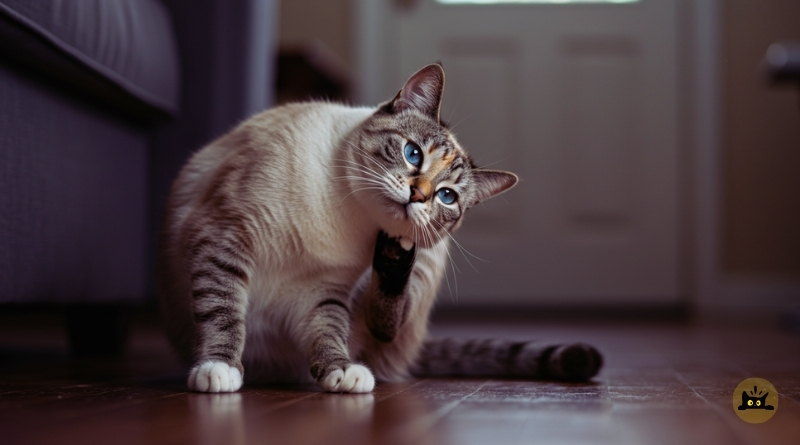Your cat suddenly stopped grooming themselves. They turned their head and started scratching. As you watch them scratch, you notice they keep scratching the same spot. Could there be a sore or a redness? You can tell right away when they’re not happy, can’t you?
That’s exactly why I’m writing this article. We’ll cover everything you need to know about cat skin treatment. It might seem complicated, but I can break it down into simple terms to make it easy.
Where Do Skin Problems Come From?
Cats usually don’t show when they’re in pain. Even if something hurts, they won’t react—or they’ll keep their reaction to a minimum. To understand their discomfort, you need to observe carefully. Skin problems often go unnoticed. But there are some signals that aren’t hard to spot:
- If they’re scratching constantly
- If their fur is falling out
- If red spots, sores, or scabs appear on their skin
- If they get restless the more they scratch
These are your cat’s way of telling you something. Watch closely, and you’ll understand.
You’ll Miss Hearing “Your Coat Looks So Shiny”
Normally, a cat’s fur is soft, shiny, and clean. When skin problems arise, the first warning signs come from their coat. The fur loses its sheen. Mats form. In some areas, you might even see complete hair loss.
And what about those white flakes behind their ears? You’ve probably noticed them too. That’s another sign of a skin issue.
Scratching Is a Signal
You should also pay attention to changes in your cat’s habits. If they go from purring happily to suddenly acting aggressive when you touch them… or if they keep licking themselves non-stop… that’s a red flag that something could be wrong.
My neighbor’s little cat was licking his belly all last month. It turned out he had an allergic reaction that irritated his skin. Because we caught it early, he was back to normal in no time.
Why Are Cats Scratching?
Before starting any cat skin treatment, it’s crucial to identify the root cause. The most common culprits are:
- Fleas or mites: the most frequent enemies and leading cause of itching
- Allergies: from food, dust, cleaning products… the list goes on
- Fungal infections: often marked by round patches of hair loss
- Hormonal issues: conditions like thyroid problems or diabetes can also affect the skin
What You Can Do at Home for Cat Skin Treatment
When you think “cat skin treatment,” don’t immediately jump to medications. There are plenty of things you can do at home:
- Brush their fur: at least once a week, especially if they have long hair. You’ll remove dead hairs and give their skin a gentle massage.
- Watch their diet: high-quality food and omega-3 supplements support the skin from the inside.
- Simplify their environment: choose cleaning products with natural ingredients. Reduce potential allergens.
- Talk to them while inspecting their coat: it keeps them calm and reminds them they’re loved.
Stress? Yes, That Can Cause Itching, Too
Stress can cause skin problems in cats. Cats that constantly lick, hide, or scratch themselves will eventually damage their skin. Therefore, cats need activities that reduce their stress and bring them joy:
• Daily playtime
• An area where they can watch outside from a window
• Toys such as scratching boards and cardboard boxes
• A quiet corner: cats sometimes just want peace and quiet
Remember: a happy cat hardly ever scratches.
Start Right Now: 5 Small Steps
Let’s look at some steps you can take immediately:
- Observe: Is there a particular spot they’re scratching? Do their fur or skin look different than usual? Try to check every day.
- Brush: At least once a week to reduce shedding and inspect their skin.
- Check their food: If you’ve recently switched brands, it could trigger an allergy. Stay alert!
- Keep their space clean: Wash their bed, blankets, and any rugs regularly.
- Consult your vet: If you’ve noticed symptoms for a while, don’t wait—visit the vet. Never use a cream you’re unfamiliar with without your vet’s approval.
Final Word
Your cat’s skin isn’t just the layer beneath their fur. It’s where their comfort, happiness, and well-being live. By staying informed about cat skin treatment, you’ll improve your little friend’s quality of life.
Remember: early detection is everything. Look, observe, ask questions… your cat might be trying to tell you something.
Sources : Pet Health Network, The Spruce Pets, PetMD
For more insights on cat nutrition and grooming, explore our comprehensive cat care guide: Manage Your Cat’s Asthma Today

